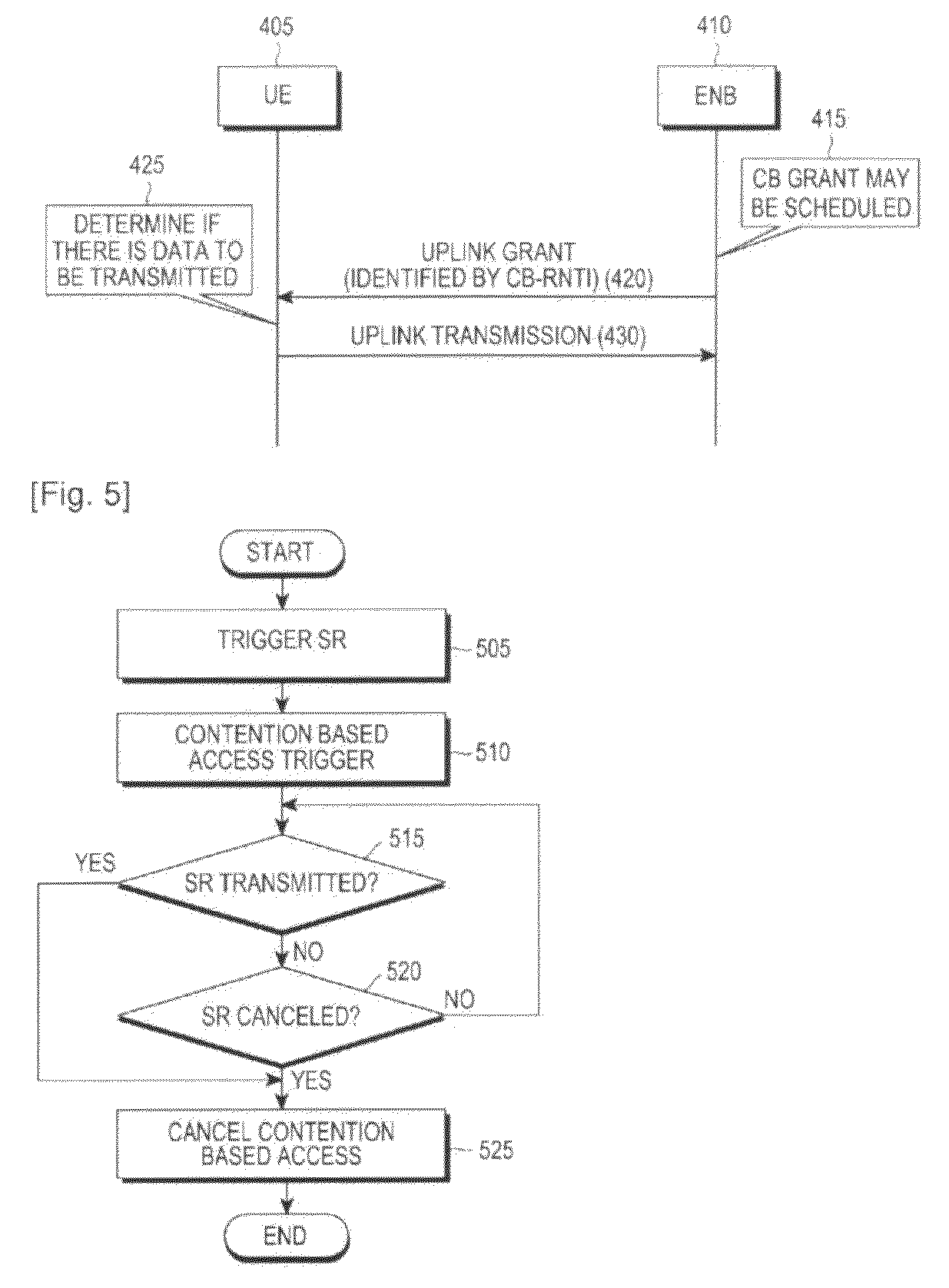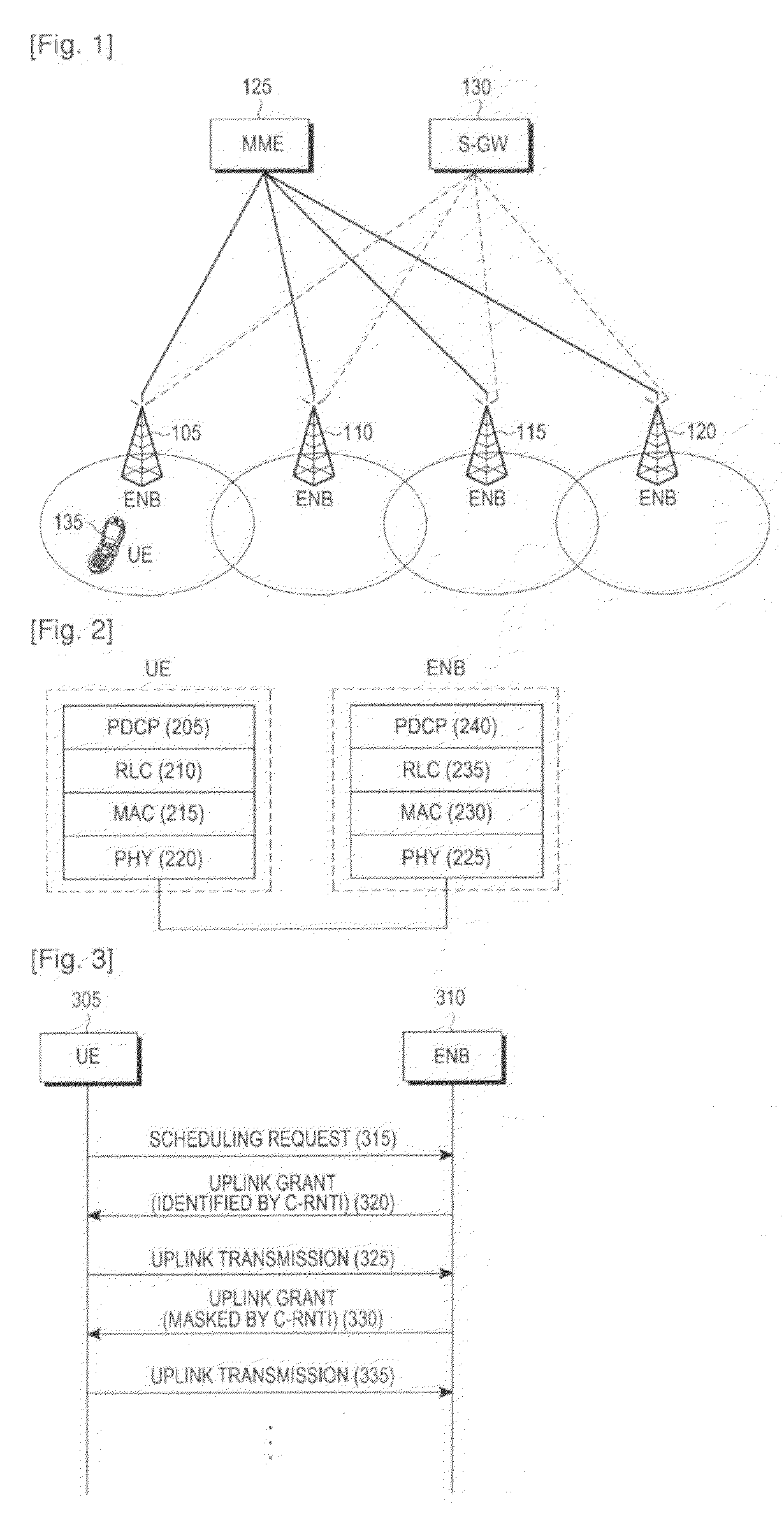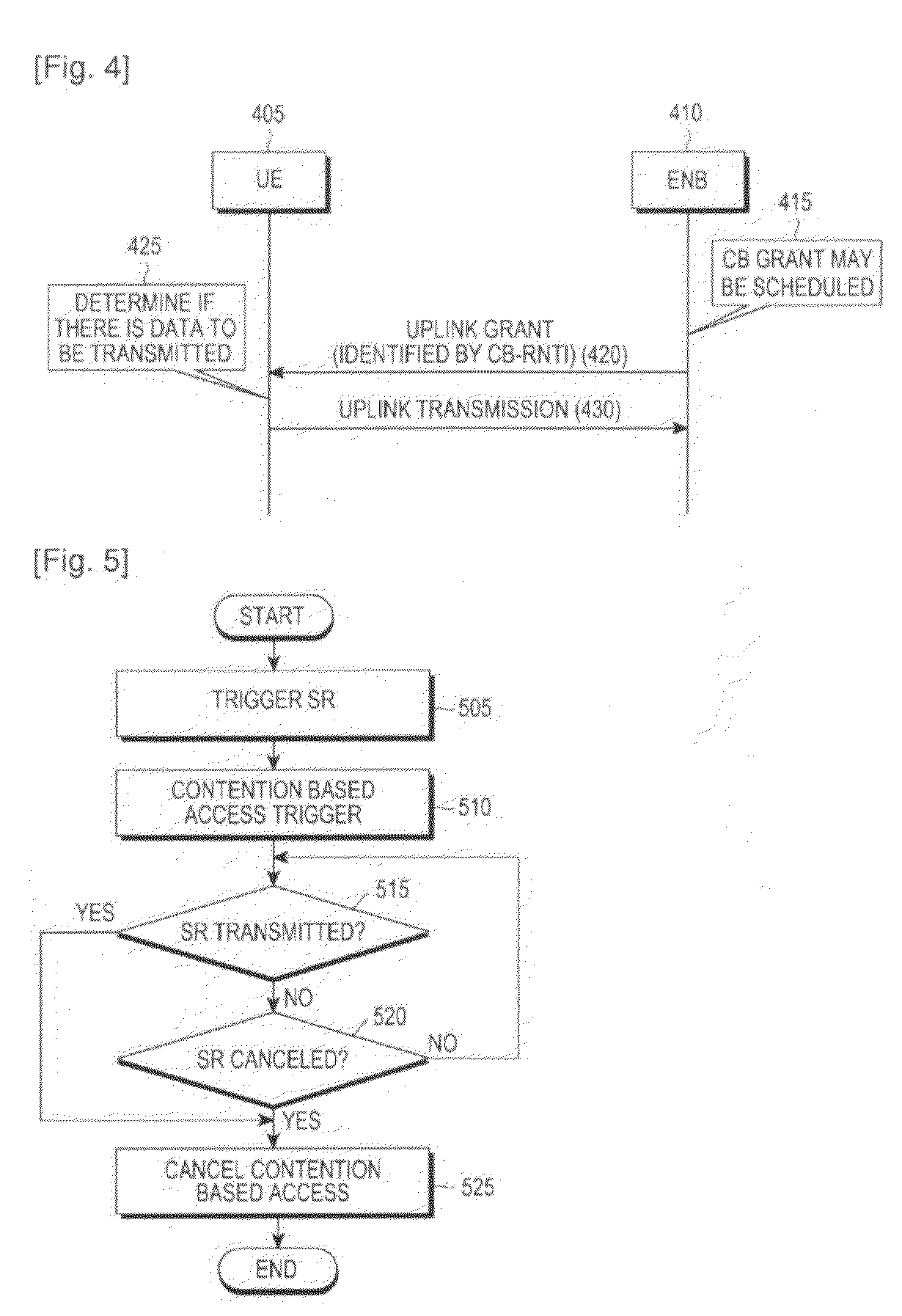Apparatus and method for performing contention based access in mobile communication system
a mobile communication system and apparatus technology, applied in the field of apparatus and apparatus for performing contention-based access in the mobile communication system, can solve the problems of increasing transmission delay and signal collision
- Summary
- Abstract
- Description
- Claims
- Application Information
AI Technical Summary
Benefits of technology
Problems solved by technology
Method used
Image
Examples
1st embodiment
[0050]The first embodiment of the present invention presents a method and an apparatus, which allow only a UE having a remarkable necessity to use an uplink grant (which will hereinafter referred to as contention based uplink grant) for contention based access, in order to minimize the probability that a collision in the uplink transmission for contention based access may occur. Hereinafter, for convenience of description, the state in which use of a contention based uplink grant has been allowed is referred to as a state in which a contention based access has been triggered.
[0051]The contention based access is triggered or cancelled in connection with an occurrence of a predetermined event described below, and a contention based access can be performed in a state in which the contention based access has been triggered and has not been cancelled yet. The state in which the contention based access has been triggered and has not been cancelled yet is expressed as a state in which a co...
2nd embodiment
[0064]While the convention based access has been triggered, a UE continuously performs a contention based uplink transmission, which increases the probability of collision with a contention based uplink transmission signal from another UE. In order to solve this problem, the second embodiment of the present invention presents a solution of prohibiting a contention based uplink transmission during a predetermined time interval after the contention based uplink transmission by a UE.
[0065]FIG. 6 is a flowchart illustrating an operation of a UE according to the 2-1st embodiment of the present invention.
[0066]When a contention based access has been triggered, the UE 405 performs the operation as shown in FIG. 6.
[0067]First, in step 605, the UE 405 performs a monitoring in order to determine if an uplink grant identified by a CB-RNTI, that is, a contention based uplink grant, is received. In step 610, the UE 405 determines if a contention based uplink grant has been received. When a conte...
3rd embodiment
[0071]In general, it is reasonable that a contention based access is also canceled when an SR is cancelled. However, in the case of a UE to which a D-SR transmission resource is not allocated, an association between a cancellation of an SR and a cancellation of a contention based access may unnecessarily limit the contention based access.
[0072]FIG. 8 illustrates a problem that a contention based access may be canceled before a random access process is performed. When an SR is triggered, a UE to which a D-SR transmission resource is not allocated instantly cancels the SR and starts a random access process (step 810). The random access process includes transmission of a random access preamble, reception of a random access response, and settlement of collision, wherein the transmission of a random access preamble is not always possible but is possible only through a pre-allocated random access transmission resource (PRACH resource) 815. Therefore, even after the random access process s...
PUM
 Login to View More
Login to View More Abstract
Description
Claims
Application Information
 Login to View More
Login to View More - R&D
- Intellectual Property
- Life Sciences
- Materials
- Tech Scout
- Unparalleled Data Quality
- Higher Quality Content
- 60% Fewer Hallucinations
Browse by: Latest US Patents, China's latest patents, Technical Efficacy Thesaurus, Application Domain, Technology Topic, Popular Technical Reports.
© 2025 PatSnap. All rights reserved.Legal|Privacy policy|Modern Slavery Act Transparency Statement|Sitemap|About US| Contact US: help@patsnap.com



